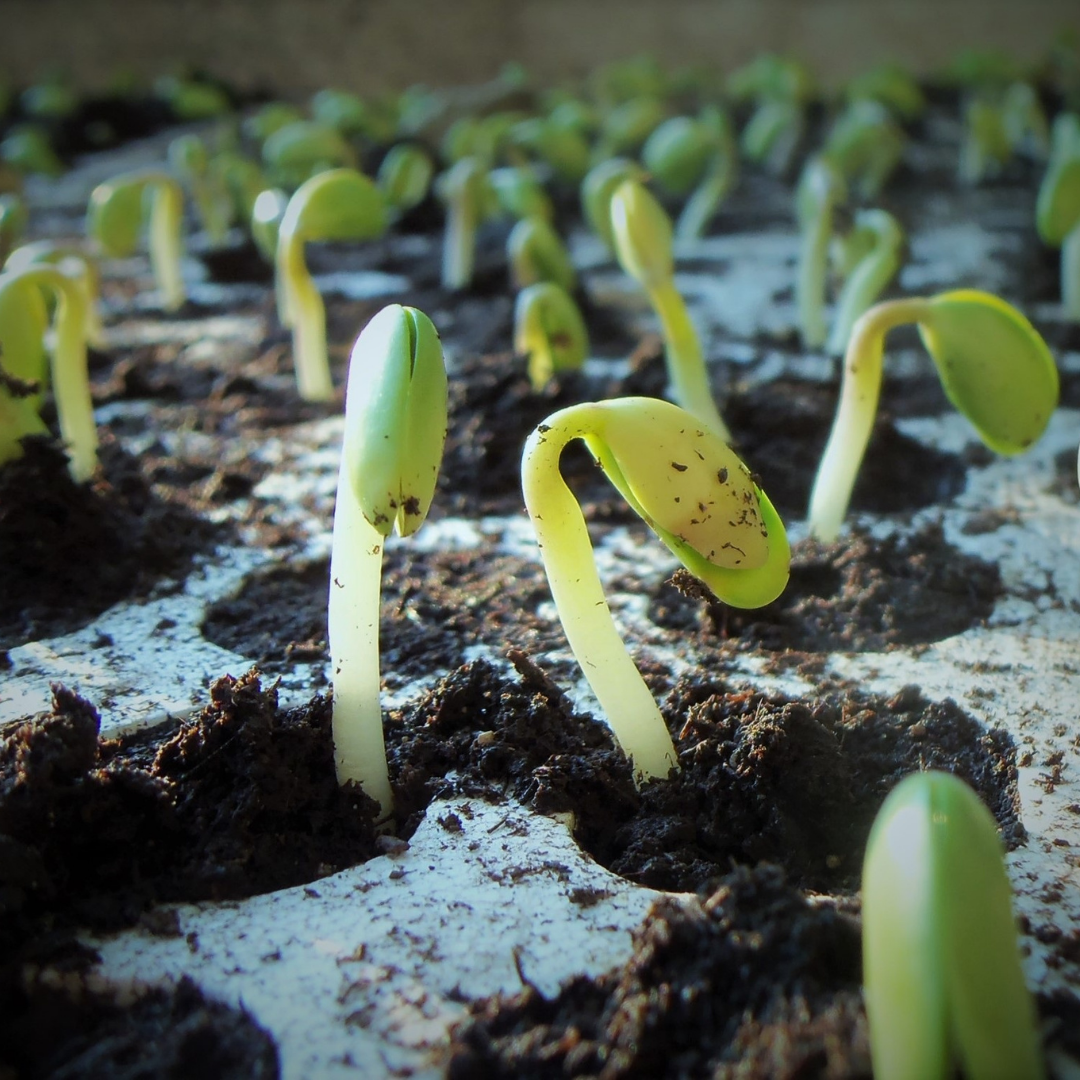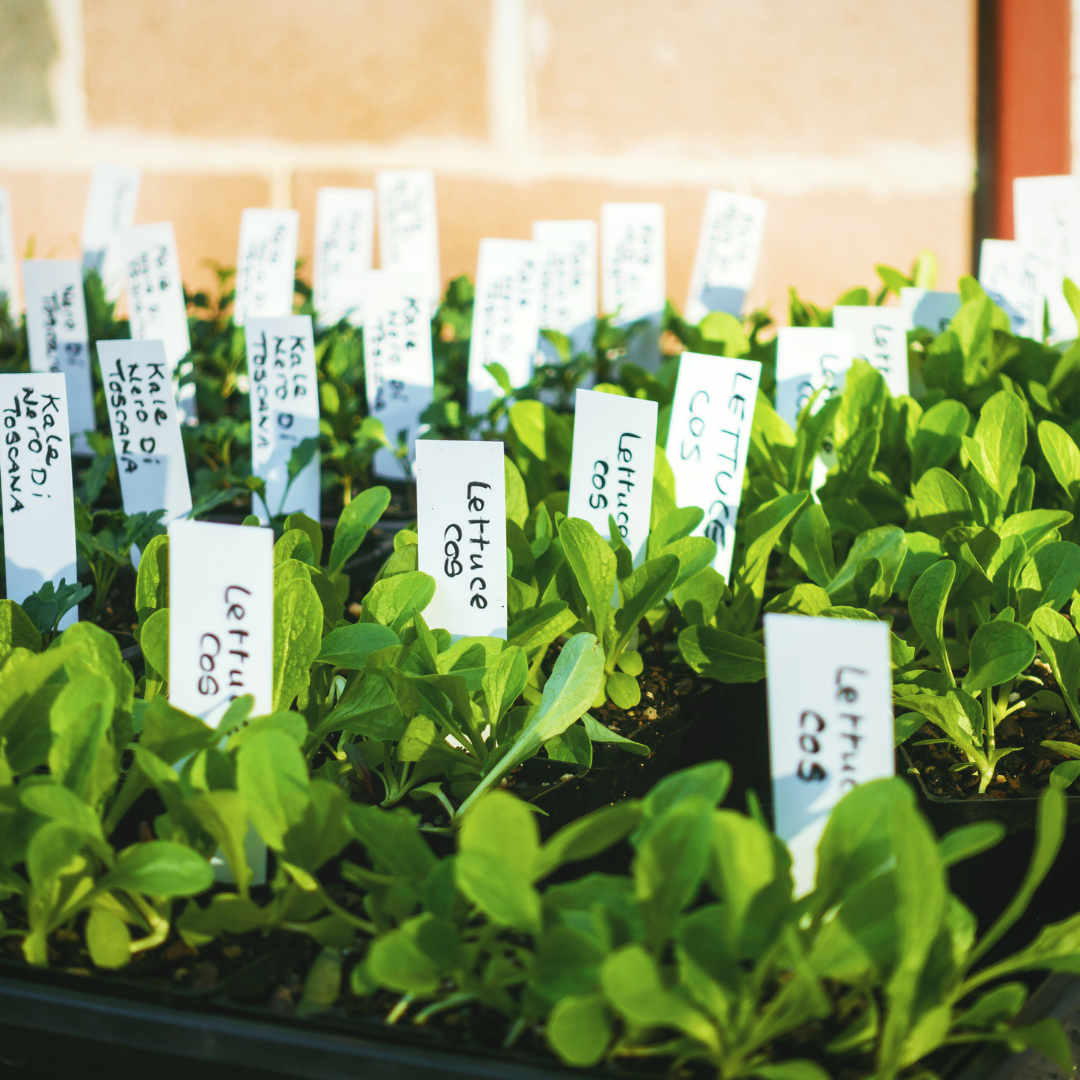Should I start my garden from seed?
There are various reasons why some gardeners choose to start plants from seed. One is that it can give you a jump on the gardening season because the process begins while it’s still cold out. Another is that it is a cost saving method because packets of seeds are cheaper and will produce many more plants than buying a few starter plants. Starting seeds yourself also allows you to know exactly how the plant was raised. You can grow organically from seed, whereas it is sometimes difficult to find organic starter plants. If you do find them, they can be more costly. Nurseries may not have the plant varieties you’re looking for. However, you have far more options with seeds. Another reason to start seeds indoors is protect seedlings from harsh weather conditions. This isn’t a factor if you’re lucky enough to have a greenhouse, which not many of us do!
Now, keep in mind that some plants are better suited to be sowed directly outdoors, like carrots and radish for example. However, many plants do exceptionally well when started from seed indoors. Plants that take longer to get to harvest are great to start indoors, especially in shorter growing zones like we have in 5. I like starting plants indoors so that I can harvest sooner. I will usually start things like Tomatoes, Peppers, Cucumbers, Zucchini, Squashes, Eggplant, Lettuce, Kale, and Pumpkins. No one wants to wait until August to harvest their first red tomato!
To successfully grow from seeds, you need a few key components and a little patience. It isn’t difficult, or complicated, providing you understand the process. You need the basics like a proper growing medium, containers, light, warmth, water and your time. Before you get started, look up your average first and last frost dates. This will help you determine the correct time to sow your seeds. You can then use Sowing Guides to know when to start seeds indoors.
But, but… I can never get my seeds to germinate! I hear this a lot. Just know that this can happen to anyone. Seeds don’t typically have a 100% germination rate, so some failure is normal. Another factor is the quality of the seed. Seeds that haven’t been harvested or stored properly will almost always fail. That’s why it’s important to buy from a trusted source.
Botanical Interests offers a wide range of vegetable, herb, and flower seed. What I like about their seeds is that every Botanical Interests seed packet is designed to help gardeners succeed. The packets have gorgeous botanical drawings of each plant, and each packet is like a mini-encyclopedia, full of information inside and out, to inspire and assist every type of gardener. They are also verified Non-GMO.
A note about germination. It requires four important factors: water, oxygen, light, and temperature. Read the seed packets to know what your seeds require. Here are some general guidelines:
1. Water: Too little and seeds will remain dormant. Too much and they can rot. Adequate and consistent moisture is the key. Use a spray bottle to gently mist daily. Keep the medium damp not wet.
2. Oxygen: Heavy wet soil will inhibit germination. You need a light growing medium like a seed starting mix, or coconut coir. It needs to be light and airy so that seeds get enough oxygen.
3. Light: Light needs vary from plant to plant. You’ll need to provide anywhere from 12-16 hours of light per day when seedlings first emerge. This can be achieved by supplementing with artificial sunlight (grow light or a fluorescent shop light).
4. Temperature: Temperature affects how many seeds will germinate and how fast they will germinate. Some seeds have a specific temperature ranges for germination, while others will germinate in a range of temperatures. 65° to 75°F range is typical for most seeds.
To make it easier on yourself, you can get one of those nifty all in one seed starting containers that come with the growing medium, tray and clear dome like this one.
There are also some more Eco-friendly options like this as well.
If you have a little money to spend and want to get a little more high-tech, you can set up a growing area with a heat mat and grow lights.
I have an older set up that I use but am thinking of upgrading my lights to LED. Currently I have 3 fluorescent and 3 heat mats that I combined with a cheap metal shelving unit to make “The Germinator”. I said that in my best Arnold voice of course. These are my seedlings from last spring. This was taken 10 days after I sowed them.
Now that you see how easy it is to start seeds, it’s time to do some seed shopping and dreaming! This is my favorite part of the current season… planning my next seasons garden. Yay!
Until next time…
Dream Big, Plant Love, and Grow Where You’re Planted
XOXO - Laurie





